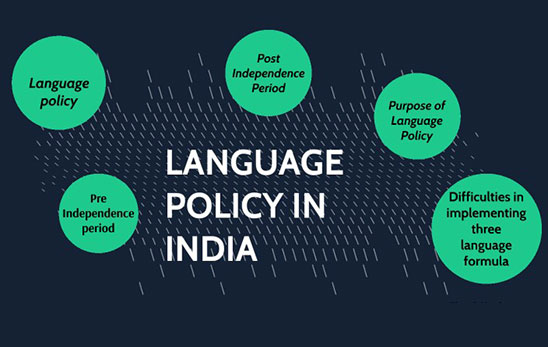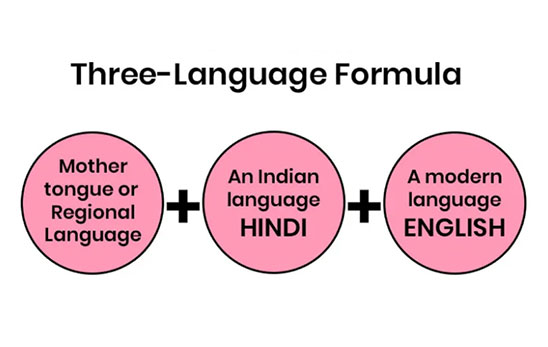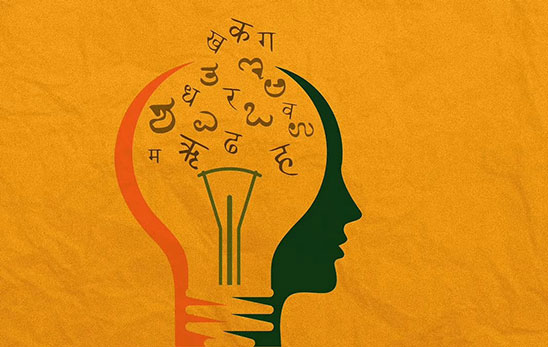An overview of the Three Language Formula in NEP 2020
Get Your Free Trial Now!
Three Language Formula in NEP 2020
The changes of the New Education Policy 2020 have also been introduced in the Indian education system. Another of the important shifts is the implementation of multilingualism through the utilization of the Three Language Formula.
The Three Language Formula is aimed at assisting natives of a particular area or different diverse regions to have linguistic competence in three languages: their mother tongue or regional language, Hindi, and English. This reform has produced an intensive debate, which is due to the fact that it alters the current language policies implemented in schools. We are going to explore three language formula in NEP 2020.It will be a complete and comprehensive guide in 2024.

Goals of the Three-Language Formula

Key goals of the three-language equation are:
1. Advance Multilingualism: Kids will learn multiple dialects; thusly, they will get an opportunity to esteem other semantic varieties and societies. In this way, it performs an integrative action.
2. National Unity: Learning Hindi as well as some regional languages will foster mutual faith and make the nation united.
3. Global Opportunities: Knowledge of English, apart from other languages, will open more doors to promising careers in a world that is becoming more and more globalized.
The Role of Extra Classes
As per the NEP 2020, the three lingos to be focused on are: NEP 2020 extends to the three native languages mentioned as follows:
1. First Language or Nearby Language: The method of teaching a language is to make it a language or the language of the state mandatorily in the locality or universe up to Grade 5 thereafter, if possible, up to Grade 8 or beyond. For instance, in Tamil Nadu, the mother tongue to be studied would be Tamil.
2. Hindi: Hindi will be taught in schools using a logical sequence right from the beginner level (Grade 3). Hindi may alternate as an option along with Sanskrit.
3. English: English should be taught as a language at schools where children will get this language from Grade 6 or, optionally, even from Grade 3.
4. Foreign Language: As for the NEP, it suggests at least the instruction of one foreign or classical language, for example, Mandarin, French, Korean, Tamil, Tehculu, and Japanese, in high school. But this is not required.
No language is to be imposed. An imposition of this three-language formula in no way refers to imposing a language contrary to people's wishes. States may use any language as per the people's demands.

Formula's Implementation Hurdles
While the approach goes for the gold, there are a few critical difficulties in its implementation: While the strategy holds back nothing, there are a few vital difficulties in its execution:
Deficiency of Language Educators
Finding sufficient educators who are fit for showing each of the three dialects in schools across India, particularly Hindi and English, will be an extreme errand.
Opposition from Some States
Tamil Nadu Dravida Munnetra Kazhagam parties have a long history of opposing the imposition of Hindi. This could be interpreted as a three-language policy resulting in the domination of Hindi due to their promotion.
Divergence from State Policies
Some states follow the English and Tamil formula, for example, Tamil Nadu. They can have reluctance toward studying three languages.
Additional Burden
Many argue that studying three languages in the early stages of education is burdensome to the students. It has been disputed as being more ambitious than practical.
Resources Required
Teaching three languages requires curriculum development; textbooks pay intermediaries to develop teaching-learning materials, something that requires substantial financial investment.
Don’t Miss Out: NEP 2020's Focus On Early Childhood Care And Education (ECCE)
Conclusion about Three Language Formula in NEP 2020
The mixed language policy propounded in the NEP 2020 emphasizes multilingualism and national integration. Despite various difficulties, such as the lack of a sufficient workforce of experienced teachers, the resistance of states, and additional pressure on students, it keeps going.
If implemented in a proper way, the policy will give the young generation of India the opportunity to improve their language skills and enable them to thrive in the global market while keeping the country united. A gap analysis is essential for identifying areas where the policy may fall short and need improvement. The Centre and the states need to develop implementation strategies that are well thought out and effective.

FAQs about Three Language Formula in NEP 2020
Is the three-language policy universal in every state?
No, since, as per NEP, it is the choice of the state. The language is what people want. Using any language goes against the spirit of the decree.
Can Sanskrit be picked out over Hindi as a choice?
Yes indeed! States can offer the student the choice between Hindi and Sanskrit.
In what grade would they start the policy of three languages?
No, it will be phased in. Regional language will be the contact language at least until 5th grade. Third-grade Hindi and sixth-grade English will start coming.
Is it expected that CBSE schools stick to this formula?
Regarding centre-based CBSE schools, it is mandatory that they follow the three-language formula as per the NEP and offer Hindi, English, and a regional language.